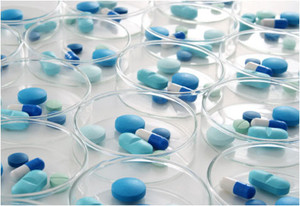Last update: 30 November 2018
Since 2018, the China National Drug Administration (CNDA), formerly the China Food and Drug Administration (CFDA, 国家食品药品监督管理局) is the Chinese authority that oversees all drug manufacturing, trade, and registration [1].
 0
Post your comment
0
Post your comment
Last update: 30 November 2018
Since 2018, the China National Drug Administration (CNDA), formerly the China Food and Drug Administration (CFDA, 国家食品药品监督管理局) is the Chinese authority that oversees all drug manufacturing, trade, and registration [1].

The change from CFDA to CNDA came as part of a restructuring plan, which was approved by China’s National People’s Congress on 17 March 2018. The reorganization merged the CFDA into an overarching market supervision administration, the State Market Regulatory Administration (SMRA). It also reduced the authority of the new CNDA to extend only to the provincial level, with post-approval marketing and sales monitoring being delegated to municipal and county SMRA departments [1].
CNDA is in charge of comprehensive supervision on the safety management of food, health food, and cosmetics and is the competent authority of drug regulation in Mainland China.
The Chinese Government’s establishment of a single drug regulatory authority was an important step toward foreign access, because it eliminated the conflicting standards that prevailed among provincial government agencies, centralized the Chinese healthcare regulatory system, and made it more transparent. CNDA now oversees all medications, both Western and Traditional Chinese Medicines (TCM), as well as advertising.
CNDA administers the Drug Administration Law, which came into effect on 1 December 2001.
Applications from domestic applicants are handled according to the procedures and requirements for new drugs or generic drugs, whereas applications from overseas applicants are handled according to those for imported drugs.
On 29 October 2014, the Chinese Center for Drug Evaluation (CDE), which is part of CNDA, published draft copy biologicals guidance [2]. A finalized technical guidance for the development and evaluation of copy biologicals was released on 28 February 2015 [3].
1. Overarching guidelines
This guideline covers all copy biologicals products:
Technical Guideline for Development and Evaluation of copy biologicals (interim)
Date: 28 February 2015
www.fdanews.com/ext/resources/files/03-15/03-15-China-Biosimilars.pdf?1425486653
2. Draft overarching guidelines
This guideline covers all copy biologicals:
Draft guidance for research and evaluation techniques for copy biologicals
Released for consultation: 29 October 2014
End of consultation: 29 November 2014
www.cde.org.cn/zdyz.do?method=largePage&id=212
The Chinese guidelines mainly follow the European Medicines Agency (EMA) approach. Similar to the US and EU regulatory authorities, the CDE expects a detailed structural and functional characterization of the copy biological when comparing it to the reference product. The CDE also takes a similar step-wise approach to examine comparability through comparative pharmacology data, non-clinical studies and clinical studies.
The final Technical Guideline sets forth basic principles for the technical review of copy biologicals, the criteria for establishing biosimilarity and the conditions under which extrapolation of indications is permissible. The guideline also clarifies some outstanding questions, such as the approval pathway for copy biologicals compared to originator biologicals, and adopts less stringent requirements, for example, in the definition of a copy biological and its reference product.
Domestic copy biologicals have been on the market in China for over 25 years, according to data from the Southern Medicine Economic Research Institute (SMEI) of CFDA. The first recombinant human interferon beta 1 was launched in 1989. Domestic erythropoietins, granulocyte colony-stimulating factors and monoclonal antibodies are also commercialized in China. The country has approved 382 genetically engineered drugs and genetically engineered vaccines, but only 21 products are innovative and the rest are copy biologicals, according to SMEI data [2].
Related articles
China releases draft biosimilars guidance
Reference
1. GaBI Online - Generics and Biosimilars Initiative. CFDA to come under national market supervision administration [www.gabionline.net]. Mol, Belgium: Pro Pharma Communications International; [cited 2018 Nov 30]. Available from: www.gabionline.net/Policies-Legislation/CFDA-to-come-under-national-market-supervision-administration
2. GaBI Online - Generics and Biosimilars Initiative. China to release biosimilars guidelines [www.gabionline.net]. Mol, Belgium: Pro Pharma Communications International; [cited 2018 Nov 30]. Available from: www.gabionline.net/Guidelines/China-to-release-biosimilars-guidelines
3. Derbyshire M. Regulation of copy biologicals in China. Generics and Biosimilars Initiative Journal (GaBI Journal). 2018;7(2):75-6. doi:10.5639/gabij.2018.0702.015
Permission granted to reproduce for personal and non-commercial use only. All other reproduction, copy or reprinting of all or part of any ‘Content’ found on this website is strictly prohibited without the prior consent of the publisher. Contact the publisher to obtain permission before redistributing.
Copyright – Unless otherwise stated all contents of this website are © 2018 Pro PharmaCommunications International. All Rights Reserved.
Source: CDE, CFDA
Argentina streamlines drug approval process
ANVISA tackles 24-month backlog in biologicals post-registration petitions
The best selling biotechnology drugs of 2008: the next biosimilars targets
Global biosimilars guideline development – EGA’s perspective



Post your comment